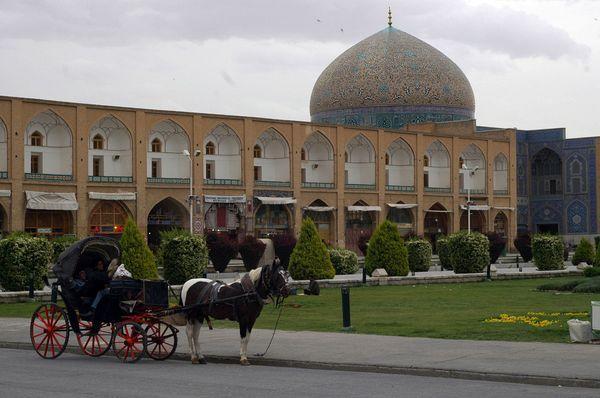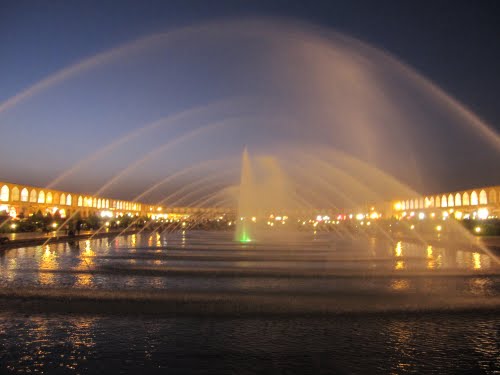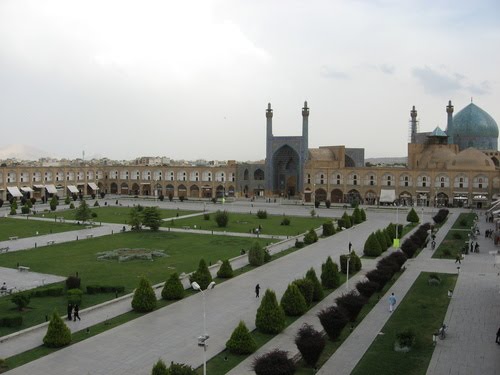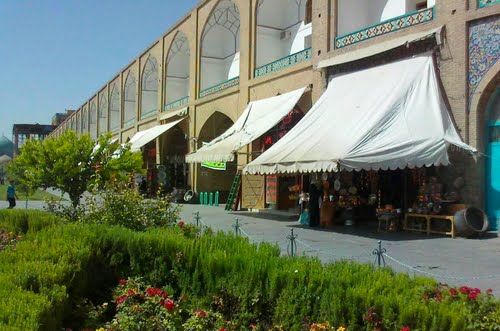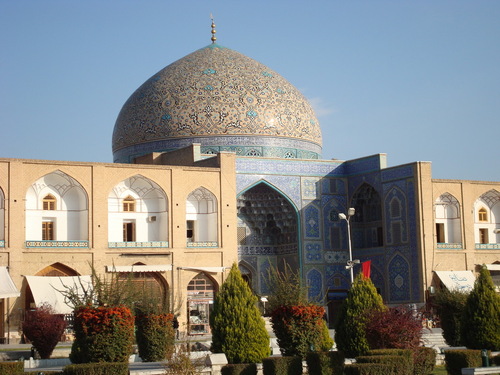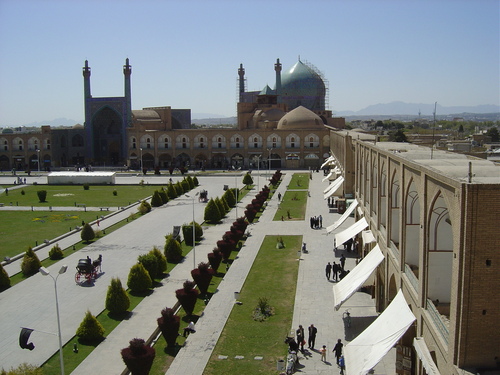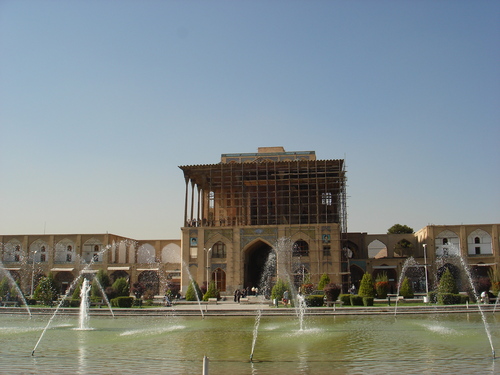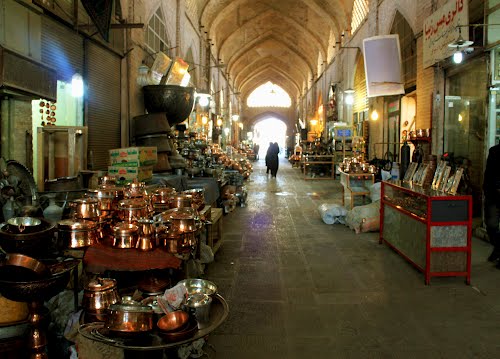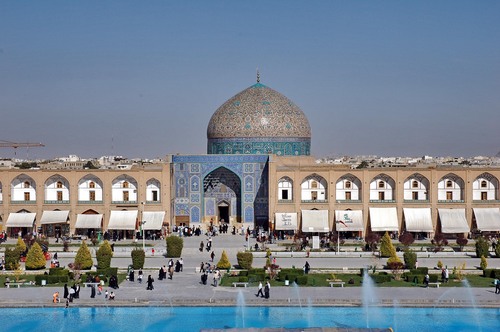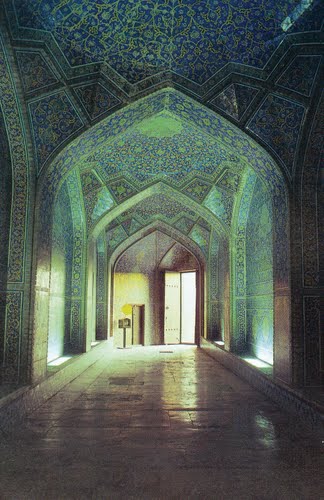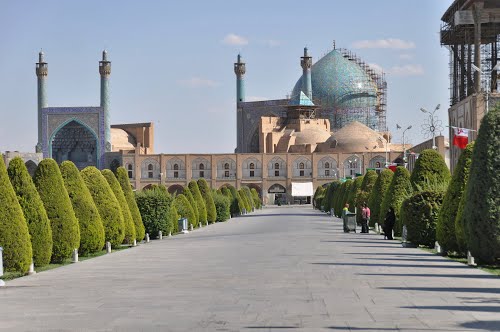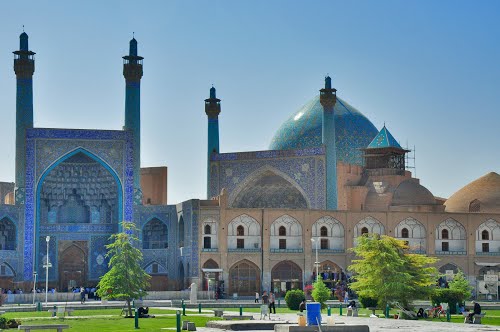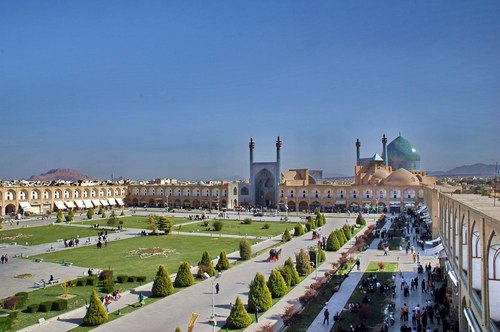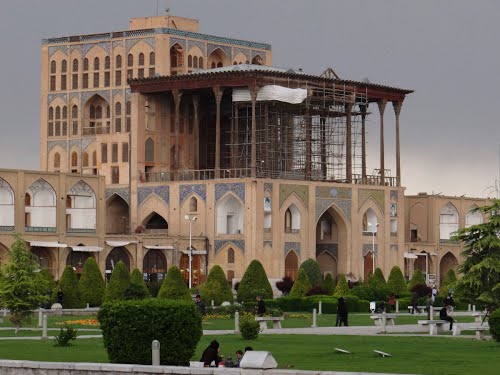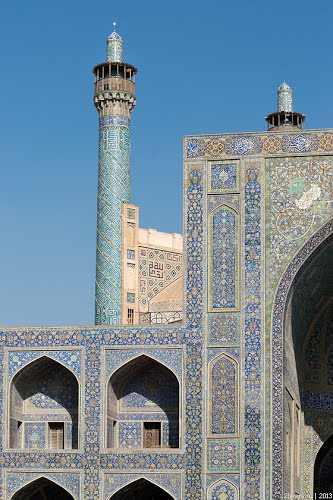Naqsh-e Jahan Square, known as Imam Square, formerly known as Shah Square, is a square situated at the center of Isfahan city, Iran. Constructed between 1598 and 1629, it is now an important historical site, and one of UNESCO's World Heritage Sites. It is 160 metres wide by 560 metres long. The square is surrounded by buildings from the Safavid era. The Shah Mosque is situated on the south side of this square. On the west side is the Ali Qapu Palace. Sheikh Lotf Allah Mosque is situated on the eastern side of this square and at the northern side Keisaria gate opens into the Isfahan Grand Bazaar. Today, Namaaz-e Jom'eh is held in the Shah Mosque.
The square is depicted on the reverse of the Iranian 20,000 rials banknote.
History
In 1598, when Shah Abbas decided to move the capital of his empire from the north-western city of Qazvin to the central city of Isfahan, he initiated what would become one of the greatest programmes in Persian history - the complete remaking of the city. By choosing the central city of Isfahan, fertilized by the Zayande roud, lying as an oasis of intense cultivation in the midst of a vast area of arid landscape, he distanced his capital from any future assaults by the Ottomans, the arch rival of the Safavids, and the Uzbeks, and at the same time gained more control over the Persian Gulf, which had recently become an important trading route for the Dutch and British East India Companies.
The chief architect of this colossal task of urban planning was Shaykh Bahai, who focused the programme on two key features of Shah Abbas's master plan: the Chahar Bagh avenue, flanked at either side by all the prominent institutions of the city, such as the residences of all foreign dignitaries, and the Naqsh-e Jahan Square. Prior to the Shah's ascent to power, Persia had a decentralized power-structure, in which different institutions battled for power, including both the military and governors of the different provinces making up the empire. Shah Abbas wanted to undermine this political structure, and the recreation of Isfahan, as a Grand capital of Persia, was an important step in centralizing the power. The ingenuity of the square, or Maidān, was that, by building it, Shah Abbas would gather the three main components of power in Persia in his own backyard: the power of the clergy, represented by the Masjed-e Shah, the power of the merchants, represented by the Imperial Bazaar, and of course, the power of the Shah himself, residing in the Ali Qapu Palace.

